The creative process
We did initial brainstorms in order to flesh out our idea and then combined them to create our final project.
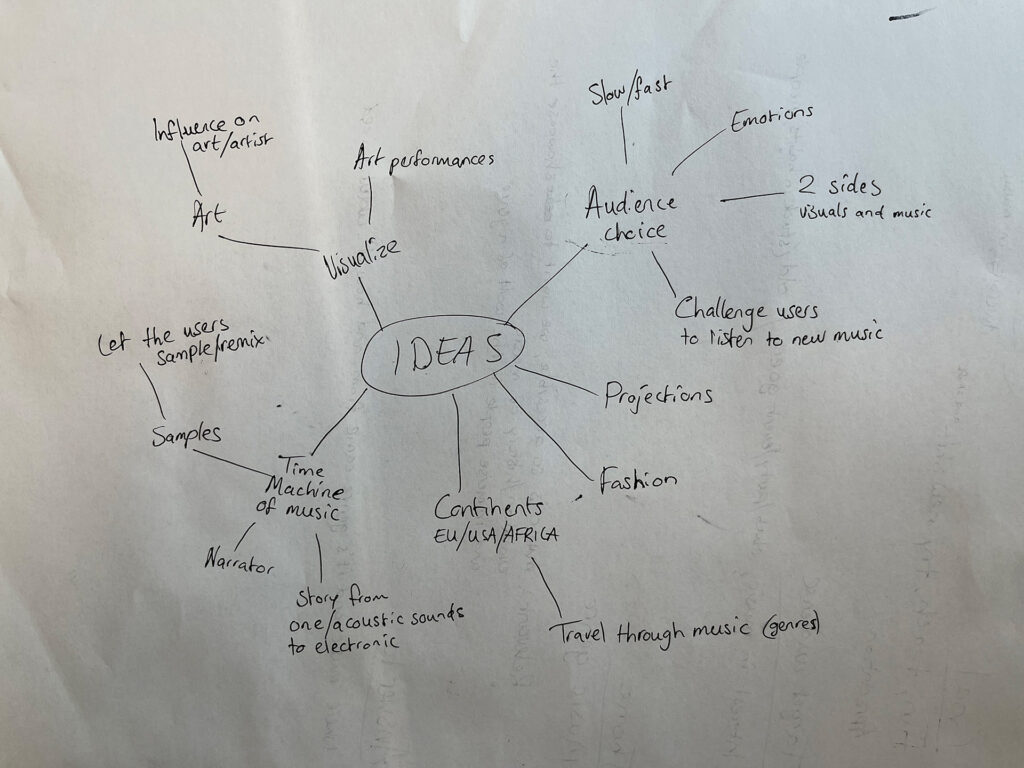
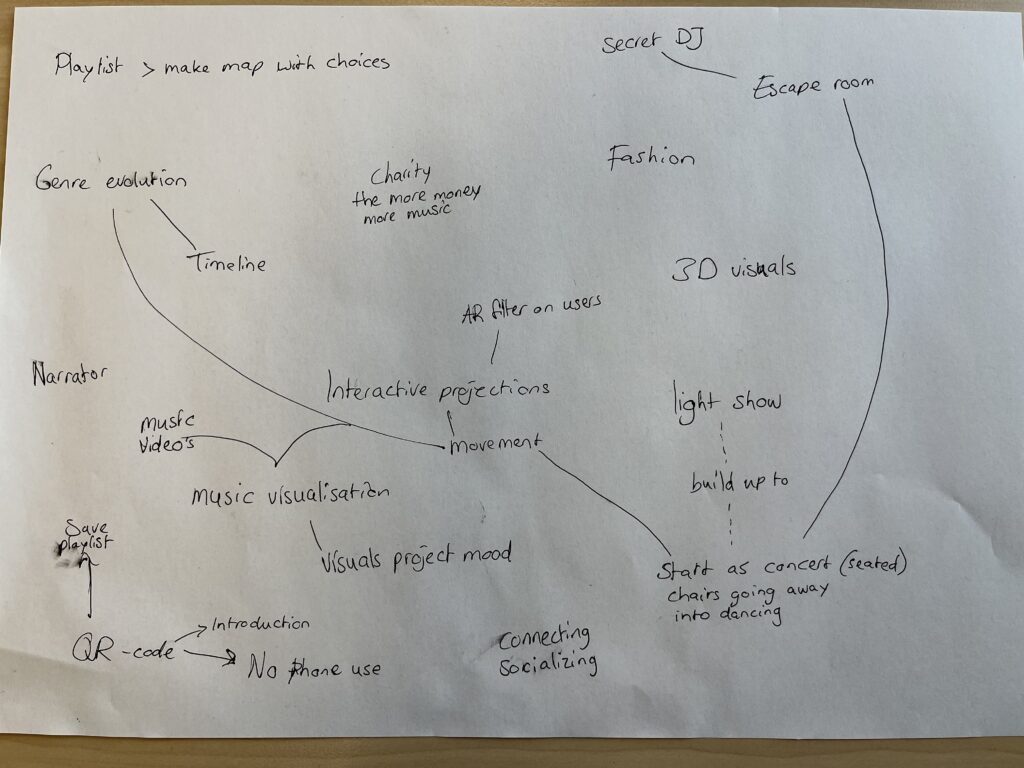
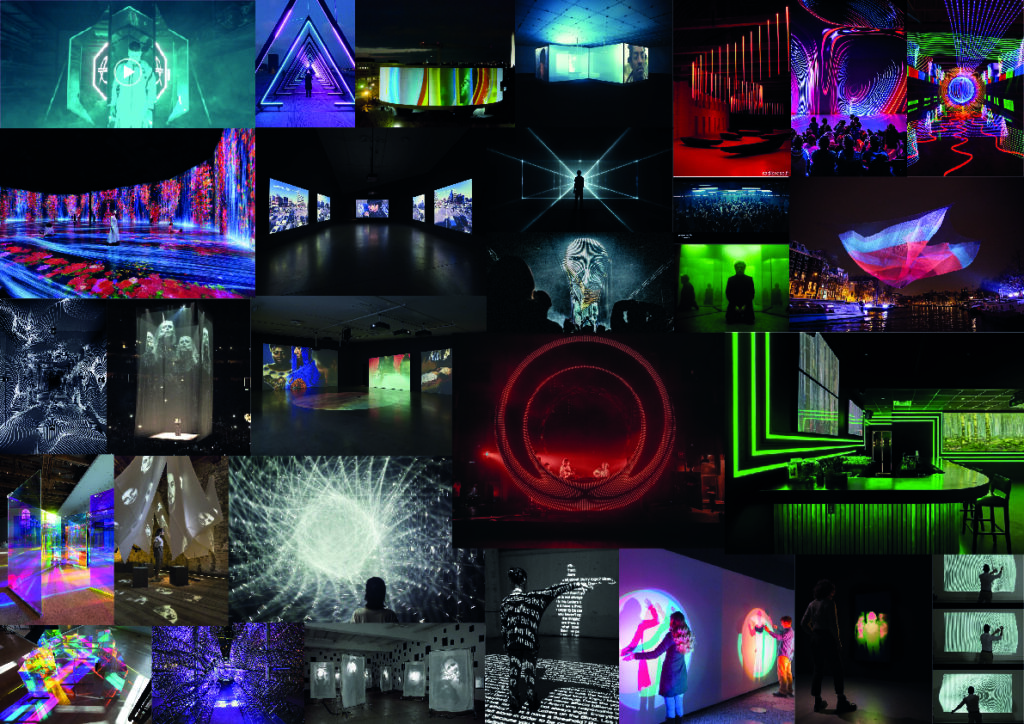
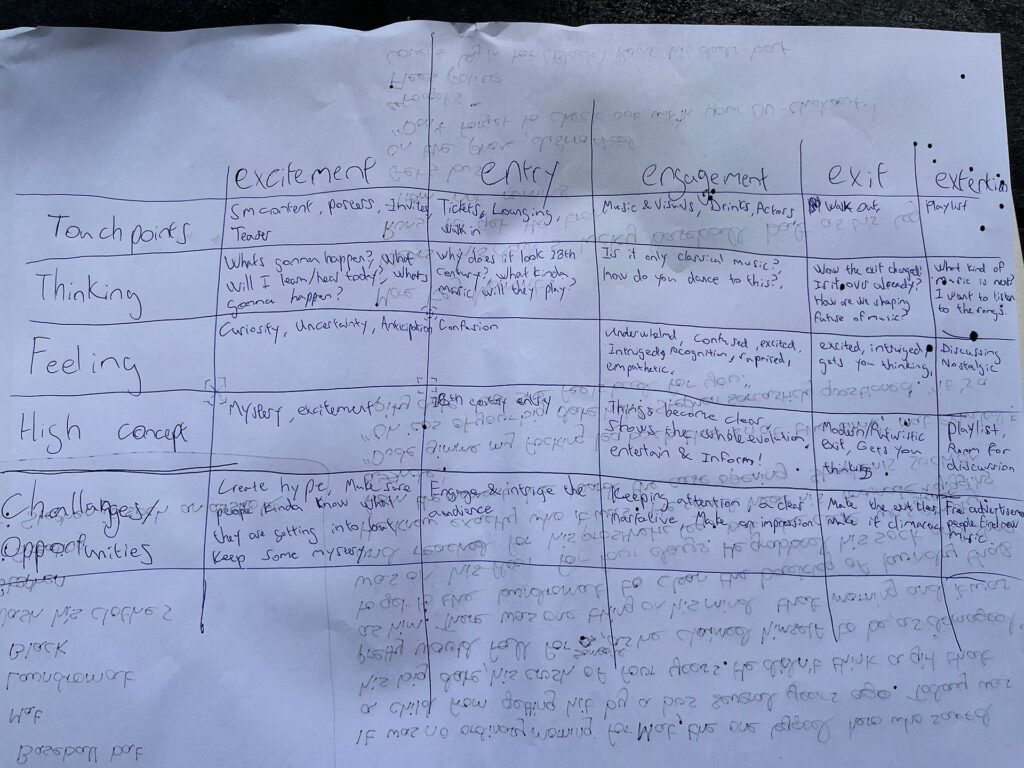
Development:
Once we decided on our final product, we developed different ways to help the audience become more immersed in the overall experience. We did this with the help of the initial brainstorms. From this we thought of the idea of introducing characters into the eras, dressed in the appropriate clothing from the given era and dancing to the music that would prompt the audience to get involved. The 5E model helped us get a clearer idea of the project vision in our head. It allowed us to
organise the project and give each other tasks to complete the final experience. We could also focus on what we wanted the audience to experience and the end goal of what we wanted them to feel/achieve when the audience finish the experience.
Prototypes & end result
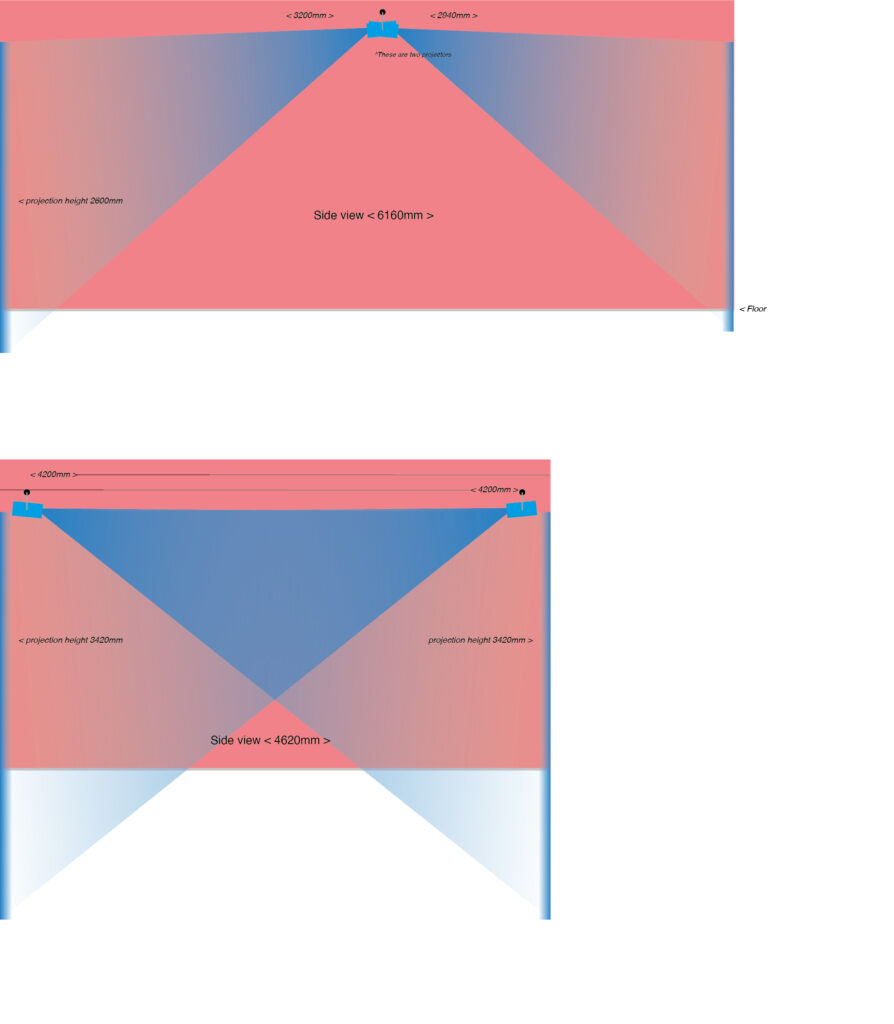
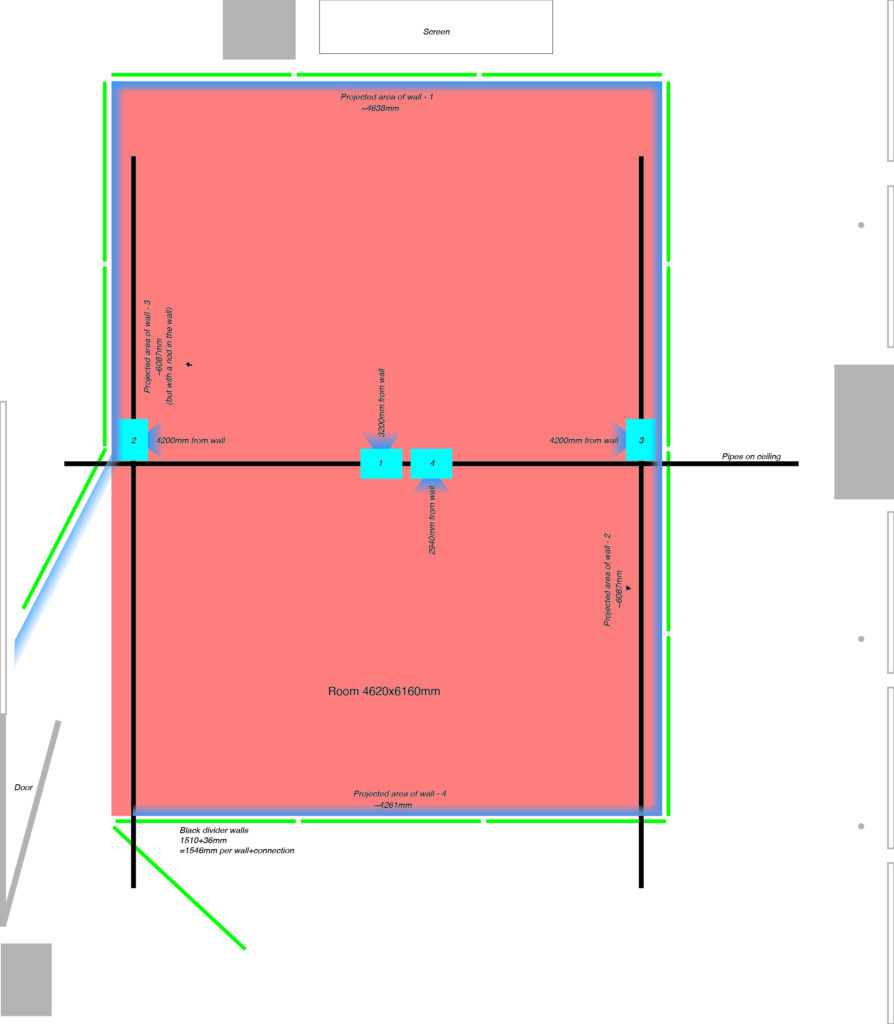
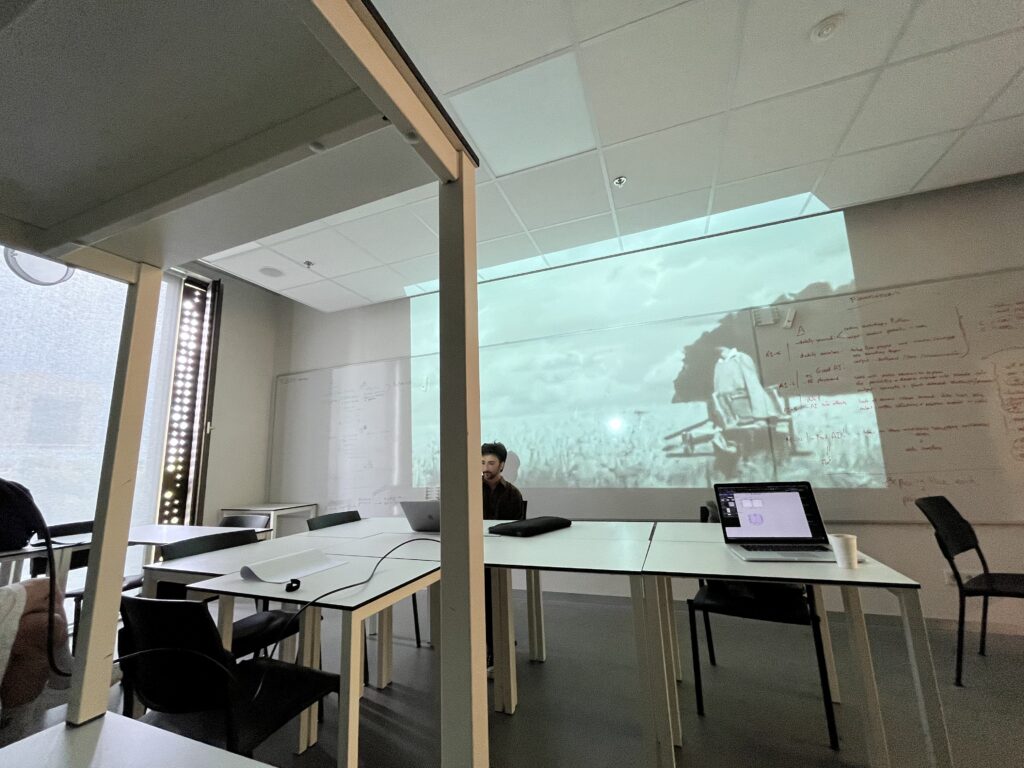
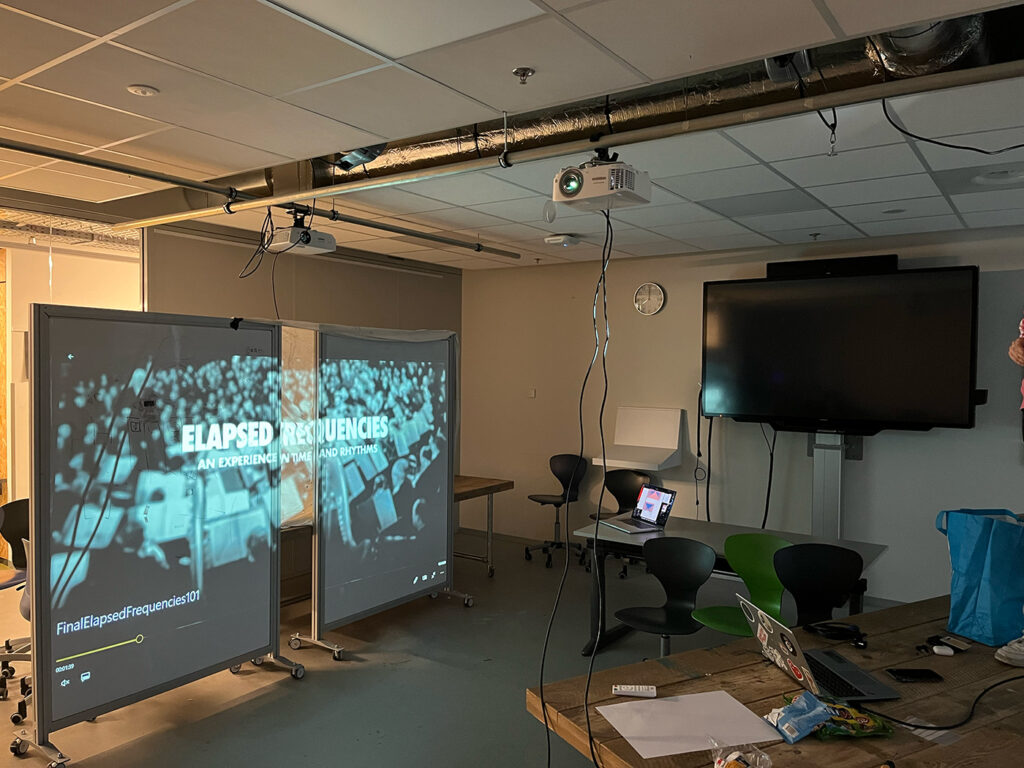
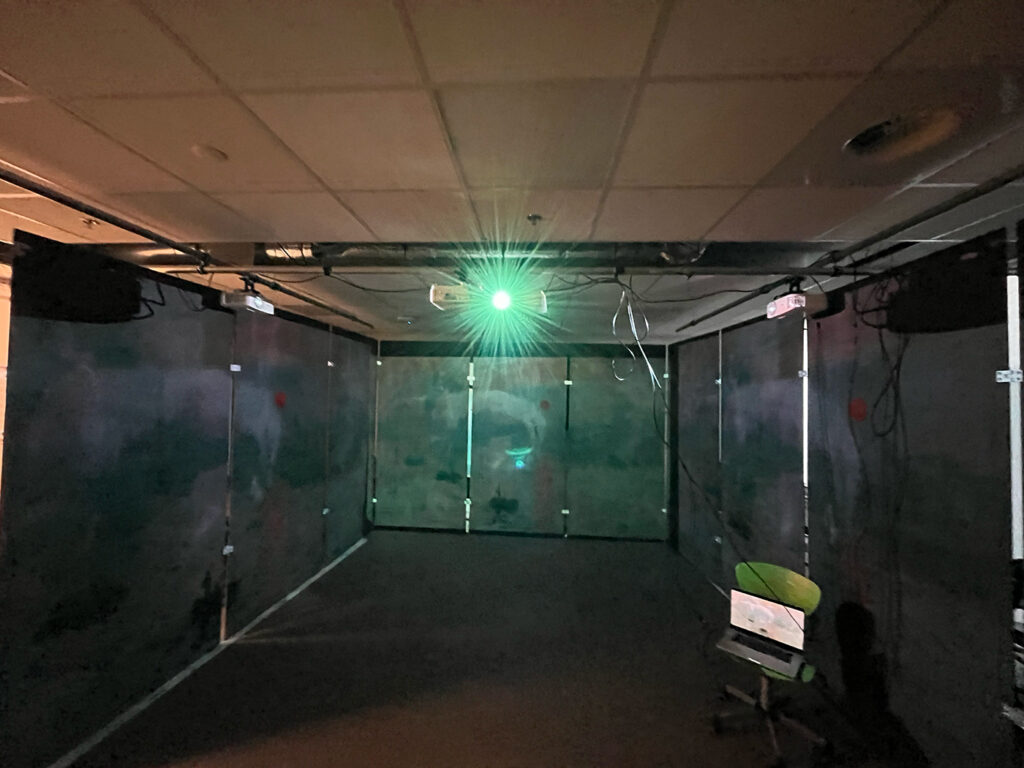
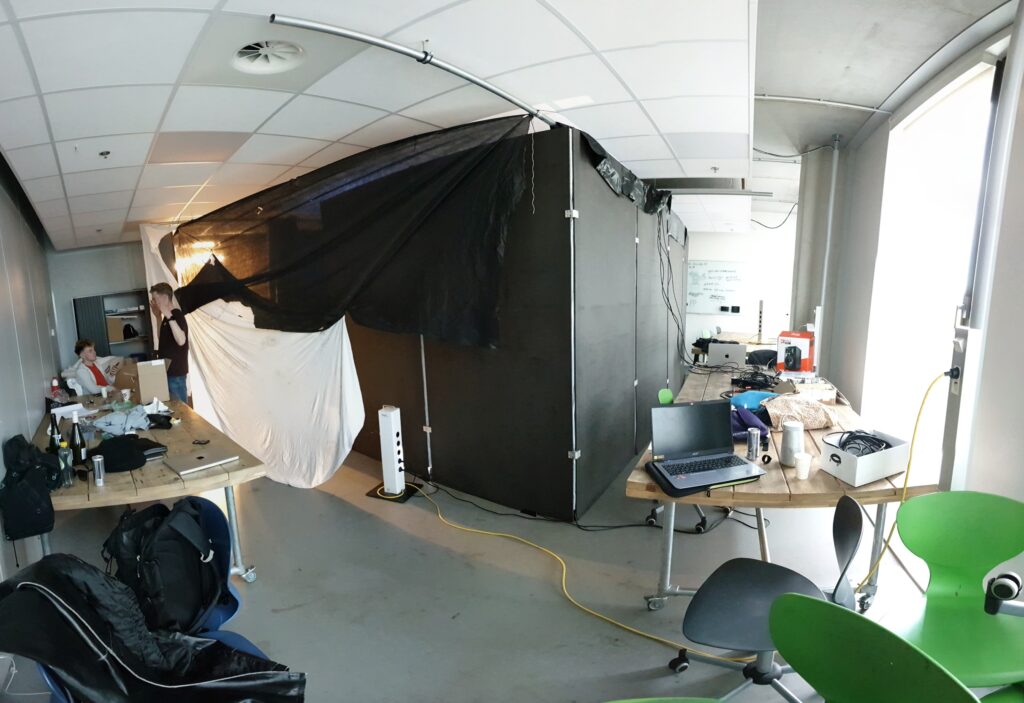
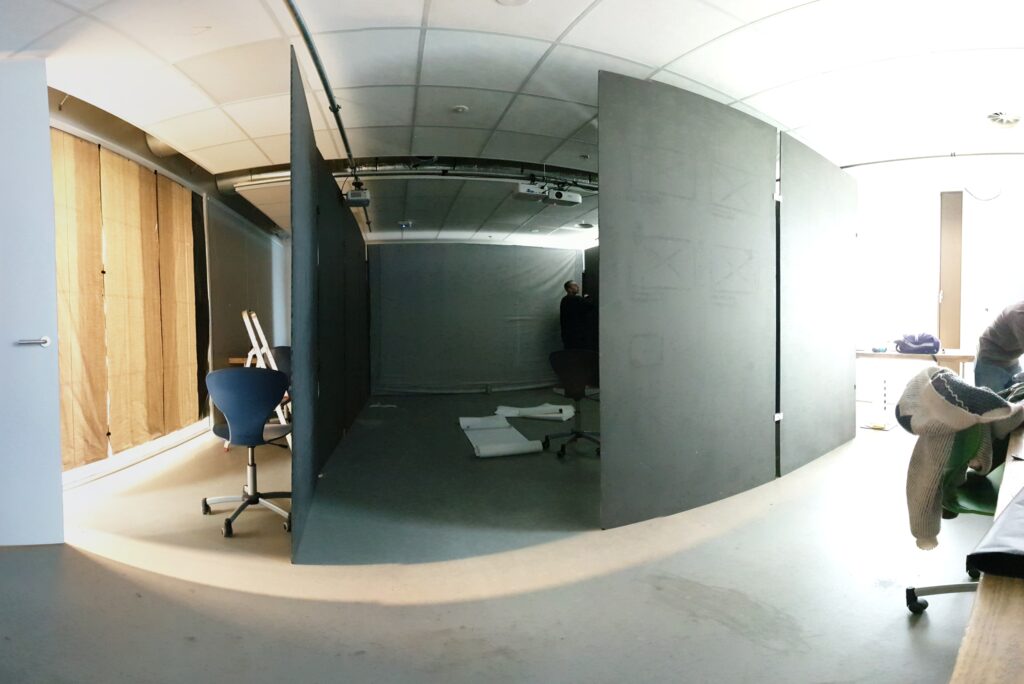
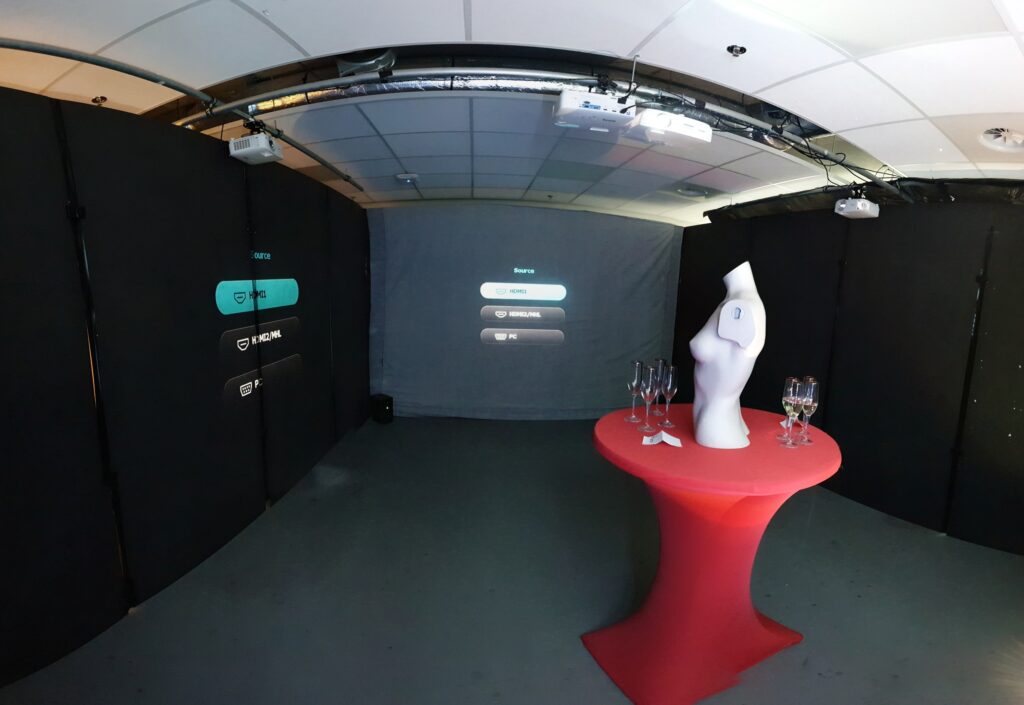
Visual tests for the sides
Explanation:
The audience is surrounded by big and loud appealing visuals and sounds in a close space. This way the audience gets overwhelmed and saturated because of the technological envelopment (sound and projections) (Wolf, 2012). These also provide sensory immersion and a perceptual response to the system. The audience gets absorbed into the experience, they walk into a closed space filled with visuals and sounds and are pulled into it. At the same time they absorb it as well by recalling places (instruments through the genres), characters and events. Forming a world in imagination and being fully engaged. The story of evolution is being told from a third person perspective and in which the audience is the observer.
The why behind the experience is to make people appreciate music genres they maybe have never listened to before. The experience involved an ‘Effort after meaning’ (Bartlett, 1932). This means that we make sense of something unfamiliar (like a new music genre) after it has happened. Through perceiving, imaging, remembering, thinking, and reasoning, humans attempt to bring past knowledge to create meaning for current events.
The experience could also inform people about where some elements of a genre came from or is a mix of and it certainly entertains people as it is sort of a clubbing experience.
Next to this it also has narrative immersion (Ryan, 2003). There is a storyline being told through sound with the evolution from classical music from back in the days to the modern futuristic music from now, accompanied by visuals belonging to that time. This makes for temporal immersion, the audience wants to know what is happening next in the story. While following the story, the audience could also feel a sense of place and time and thus being spatially immersed. At some points, depending on the person, the audience could even feel emotionally involved in the music or the social events they see (Nilsson, Nordahl & Serafin, 2016).
Justification:
The two main elements of the design are sound and visuals. These accompany each other by showing the time of visuals of the time where the music is from. This way the music gets context, and the audience could even imagine things with it themselves.
The smaller space with projections makes sure people are surrounded by the music and visuals and thus have no distractions from the outside world. According to the study of Droumeva (2005) an immersive environment contains three major elements: speech, music and soundscape. “Hearing these sounds in a darkened auditorium and in combination with larger-than- life visuals promotes the experience of immersion”.
When designing the experience we started with the 5E-model (Sontag, 2022) and later used the Experiential Journey (Bär & Boshouwer, 2019). At the invitation part there were tickets for the invitation only and a poster at the front of the experience. To transition people into the world we had a character dressed up nice (just like they were in the classical music era) welcoming people and giving some information. At the same time that was an introduction, as well as when the audience walked right into the experience with classical music on and a table with champagne. The exploration started when the visuals showed. To continue the evolutionary journey we created admiration by changing genres and having actors coming in at some points in the experience. This added to the immersion because the actors were examples from the time frame of the music being played at that moment. Social events were also seen on the visuals. This all led to the last genre that is fairly new, Hyperpop. This is the point of immersion in the Experiential Journey. This is the finale and recognizable by the times, with social events and music, we live in now. With the experience as a whole the audience gets to see connections between music, time and social events and maybe even gets to think about its future. On the recollection part we thought of an evolution album, which was the playlist behind the QR-code on the notes that got spread at the end of the experience.

